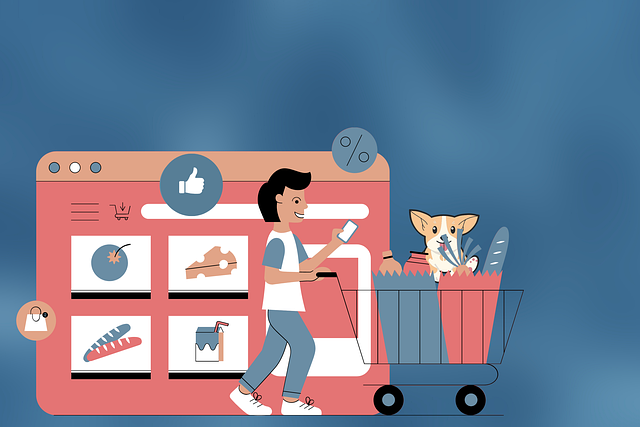Understanding Amazon FBA and Shopify Dropshipping
In the world of E-commerce, two prominent business models have emerged: Amazon FBA (Fulfilled by Amazon) and Shopify Dropshipping. Each approach offers unique advantages and challenges for entrepreneurs looking to establish a successful online business. In this blog, we will delve into the key differences between these models and help you make an informed decision based on your goals and aspirations.
Theme 1: Startup Investment – Breaking Down the Costs
When it comes to startup investment, Shopify Dropshipping takes the lead with its low-cost entry barrier. For a mere $20 USD per month, you can set up an online store on the Shopify platform. With the availability of free apps to aid in conversion optimization and fulfillment, the total investment required for launching a Dropshipping store can range from $50 to $70—a significantly affordable option.
In contrast, Amazon FBA demands a higher upfront investment. Sellers must purchase inventory in bulk and store it in Amazon’s fulfillment centers. Meeting suppliers’ minimum order quantities (MOQs) can quickly translate into thousands of dollars spent on inventory. This higher initial cost makes Amazon FBA a riskier investment, as sellers must commit capital without knowing whether their products will sell.
Theme 2: Control of Your Store – Unleashing Creativity and Branding
Shopify Dropshipping offers unparalleled control over your store’s design and branding. With this model, you can unleash your creativity and customize your store to create a visually appealing and unique brand. Implementing various strategies to boost conversions and provide an exceptional customer experience becomes second nature. On the other hand, Amazon FBA sellers face limitations in terms of store appearance and branding. They can only add an image and a product description, making it difficult to stand out from competitors.

Shopify Dropshipping enables you to present products in a captivating manner using high-quality photos, engaging product copy, and videos. By crafting a personalized and enjoyable customer journey, you significantly increase the chances of making sales. Amazon FBA, however, primarily focuses on fast shipping and meeting customer needs, rather than providing a memorable and unique shopping experience.
Theme 3: Profit Margins – Balancing Effort and Lucrative Returns
Profit margins play a crucial role in determining the long-term success of an e-commerce venture. In Amazon FBA, profit margins typically range from 8% to 25%, with the majority of sellers falling toward the lower end. This is due to Amazon’s substantial cut in profits for handling fulfillment and providing access to their platform. Conversely, Shopify Dropshipping offers more attractive profit margins, ranging from 25% to 45%.
While Amazon FBA may require less day-to-day effort, the lower profit margins can dampen its long-term appeal. Shopify Dropshipping’s higher profit margins compensate for the additional effort required. By investing time and effort in creating visually appealing stores, running effective advertisements, and ensuring a positive customer experience, sellers can potentially earn significantly more money.
Implications and Potential Impact – Choosing Your Path to Success
The choice between Amazon FBA and Shopify Dropshipping ultimately depends on your preferences and goals. Amazon FBA may suit those who prioritize convenience and faster shipping times. However, if maximizing profits and having more control over your store are your objectives, Shopify Dropshipping emerges as the better option.
Shopify Dropshipping empowers sellers to build their own brand, create a unique customer experience, and potentially earn higher profits. It allows for testing multiple products without the risk of upfront inventory purchases. Additionally, Shopify provides a wide range of apps and tools to optimize stores and enhance conversion rates.
Although Amazon FBA remains a viable business model, it necessitates a larger upfront investment and offers lower profit margins. Sellers have limited control over their store’s branding and customer experience. Nevertheless, Amazon’s vast customer base and established platform can provide a steady stream of customers.
Conclusion and Future Outlook – Making Money in E-commerce

In conclusion, both Amazon FBA and Shopify Dropshipping have their advantages and disadvantages. Amazon FBA offers convenience and access to a large customer base but demands a higher upfront investment and provides lower profit margins. Shopify Dropshipping, on the other hand, provides greater control over your store, higher profit margins, and the opportunity to build a unique brand.
As e-commerce continues to thrive, the choice between Amazon FBA and Shopify Dropshipping will depend on your goals and preferences. It is crucial to consider startup costs, control over the store, and potential profit margins before making a decision. Ultimately, success in this field demands hard work, dedication, and a focus on providing a positive customer experience.
Whether you choose Amazon FBA or Shopify Dropshipping, remember that the path to a profitable online business lies in your hands. By implementing the right strategies and emphasizing customer satisfaction, you can build a thriving e-commerce venture.
Thank you for reading this blog post. We hope you found it informative and valuable. Don’t forget to share your thoughts in the comments below and leave us a five-star rating. Together, let’s seize the opportunity to make money in the world of e-commerce!

